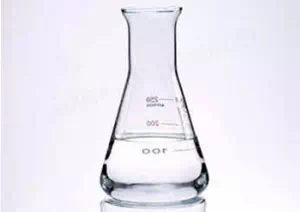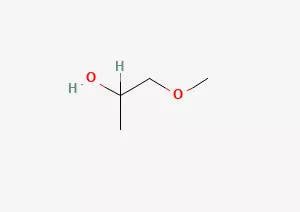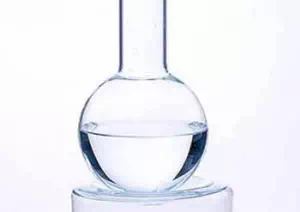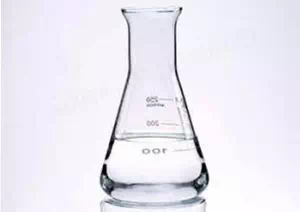All Categories




1-methoxy-2-propanol CAS 107-98-2 propylene glycol methyl ether, 1-methoxy-2-propanol, CAS 107-98-2, propylene glycol methyl ether
Among numerous organic compounds, propylene glycol ethers have attracted much attention due to their unique properties.
CAS : 107-98-2
Formula : C4H10O2
Mol. wt. : 90.12
EINECS : 203-539-1
Chemical Name: | 1-Methoxy-2-Propanol |
Other Name | Propylene glycol methyl ether; 2-Methoxy propanol |
CAS | 107-98-2 |
EINECS | 203-539-1 |
Type | Pesticide intermediates; Pharmaceutical raw materials; Organic raw materials |
Molecular Formula | C4H10O2 |
Molecular Weight | 90.12 |
Among numerous organic compounds, propylene glycol ethers have attracted much attention due to their unique properties. Among them, the toxicity of propylene glycol ether to the human body is significantly lower compared with that of ethylene glycol ether products, and it belongs to the category of low-toxicity ethers. This characteristic gives propylene glycol ether a distinct advantage in application scenarios involving human contact or those that may have an impact on the environment, significantly reducing potential health risks and environmental hazards.
Specifically for the substance propylene glycol methyl ether, it has a relatively weak ethereal smell. This smell is not strong, nor does it give off an unbearable pungent odor like some chemical substances. It is precisely because of its mild odor that propylene glycol methyl ether can not only reduce the irritation to the respiratory tract of operators and ensure their health in practical applications, but also be widely used in some fields with strict odor requirements, such as food packaging and pharmaceutical production environments, without causing pollution to products or affecting product quality due to strong odors. This makes its application scope more extensive and the usage process safer and more reliable.
It is worth mentioning that propylene glycol methyl ether is a natural solvent that conforms to the concept of environmental protection. Under the current background where environmental protection and sustainable development are highly valued, it plays an important role in the field of chemical production. It can to a certain extent replace traditional solvents that may cause significant pollution to the environment, reduce the negative impact on environmental elements such as the atmosphere, water sources and soil, and meet the requirements of green chemistry and sustainable development.
From the perspective of chemical structure, the molecular structure of propylene glycol methyl ether contains both ether groups and hydroxyl groups simultaneously. This special structure endows it with a series of excellent performances. Among them, its excellent solubility enables it to effectively dissolve a variety of substances. Whether they are polar or non-polar substances, they can all find a suitable dissolution environment in propylene glycol methyl ether, which provides convenience for many chemical reactions and technological processes. An appropriate evaporation rate ensures that it can evaporate at the expected speed during use, neither too fast to cause waste or unstable concentration, nor too slow to affect production efficiency or leave residues. In addition, its reactivity enables it to actively participate in various chemical reactions, providing more possibilities and flexibility for chemical synthesis. For this reason, propylene glycol methyl ether, with these outstanding properties, has extensive and important applications in many fields.
In the field of chemical engineering, 1-methoxy-2-propanol plays an extremely important role. It is an indispensable intermediate in the production process of the herbicide isomachlor. This specific chemical substance, with its unique chemical properties and structural characteristics, plays a crucial bridging role in a series of complex chemical reactions, providing a necessary basis for the synthesis of isomethylchlor, and thus exerts an indirect but vital influence on the weed control process in agricultural production.
Propylene glycol methyl ether, as a multifunctional chemical raw material, has a wide range of applications and is of significant importance. In terms of material processing, it is mainly used as a special solvent for nitrocellulose, alkyd resin and maleic anhydride modified phenolic materials. For nitrocellulose, propylene glycol methyl ether can effectively dissolve and disperse its molecules, making nitrocellulose have better fluidity and operability during processing and application. When interacting with alkyd resins, it can help regulate the viscosity and leveling property of the resin, ensuring the uniformity and quality stability of the coating or material. For maleic anhydride modified phenolic materials, propylene glycol methyl ether helps to achieve uniform mixing and processing of the materials and improve their performance.
Meanwhile, propylene glycol methyl ether also has excellent applications in the aviation field. It is used as an additive for aviation fuel antifreeze and brake fluid. Through ingenious combination with aviation fuel or brake fluid, it can effectively prevent fuel solidification and brake fluid freezing in extremely low-temperature environments, ensuring the normal operation and flight safety of aircraft in cold weather, and providing strong technical support for the development of the aviation industry.
Not only that, propylene glycol methyl ether also has a variety of other important uses. It can mainly be used as a solvent, dispersant and diluent, and is widely applied in various industrial fields. In the coatings industry, it can help coatings adhere better to the surface of objects, improving the quality and durability of the coating. In ink manufacturing, it can adjust the viscosity and fluidity of the ink to ensure the clarity and accuracy of the printing. During the printing process, propylene glycol methyl ether, as a diluent, can enable the ink to achieve uniform printing effects on different materials. In addition, in the dyeing process, it can also play the role of disperse dyes, making the dyeing more uniform and bright. In the field of chemical production, propylene glycol methyl ether can be used as a reaction medium or solvent, participating in various chemical reaction processes to ensure the smooth progress of the reactions. In the cellulose and acrylate industries, it also plays an important role in dissolution and dispersion, facilitating the production and processing of related products.
In addition, propylene glycol methyl ether can also be flexibly used as fuel, antifreeze, extractant, etc. When used as fuel, it can provide certain energy support for equipment under specific conditions. As an antifreeze, it can protect various equipment and pipelines from freezing damage in low-temperature environments. As an extractant, it can effectively extract target substances from complex mixtures by taking advantage of its own chemical properties, providing a reliable method for the separation and purification of substances.
Propylene glycol methyl ether also has wide applications and has demonstrated outstanding performance in numerous industrial scenarios. As a solvent, it can dissolve a variety of different substances, providing a suitable medium environment for various chemical reactions and processing techniques. In the coatings industry, propylene glycol methyl ether can make the coating components mix evenly, improving the construction performance and film-forming quality of the coatings. In ink manufacturing, it helps control the viscosity and drying speed of the ink, ensuring clear and long-lasting printing effects. As a dispersant, it can evenly disperse solid particles in the liquid medium, prevent particle agglomeration and sedimentation, and ensure the uniformity and stability of the product. During the dyeing process, propylene glycol methyl ether can assist the dye in better penetrating into the interior of the fibers, achieving a uniform and firm dyeing effect. As a diluent, it can adjust the concentration of products such as paints and inks to a state suitable for construction and use.
In the chemical industry production, propylene glycol methyl ether is widely used in the synthesis and processing of various chemicals. In the cellulose industry, it can help cellulose dissolve and process better, providing convenience for the production of cellulose derivatives. In the acrylate industry, it can participate in the reaction process and affect the performance and quality of the product. In addition, propylene glycol methyl ether can also be used as a fuel antifreeze to ensure the normal operation of the fuel system in cold weather. As a cleaning agent, it can effectively remove oil stains and impurities from the surface of mechanical equipment, keeping the equipment clean and operating normally. As an extractant, it can precisely extract the required components from complex mixtures, providing strong support for the separation and analysis of substances. In the field of cleaning non-ferrous metal clothing, propylene glycol methyl ether also plays a significant role. It can gently remove stains from non-ferrous metal clothing while protecting the texture and color of the clothing.
Melting point | -97 °C |
Boiling point | 118-119 °C(lit.) |
density | 0.922 g/mL at 25 °C(lit.) |
vapor density | 3.12 (vs air) |
vapor pressure | 10.9 mm Hg ( 25 °C) |
refractive index | n20/D 1.403(lit.) |
Fp | 93 °F |
storage temp. | Store at +2°C to +25°C. |
solubility | water: miscible |
pka | 14.49±0.20(Predicted) |
form | Liquid |
color | Colorless |
PH | 4-7 (200g/l, H2O, 20℃) |
explosive limit | 1.7-11.5%(V) |
Water Solubility | soluble |
Sensitive | Hygroscopic |
Exposure limits | TLV-TWA 100 ppm (370 mg/m3) (ACGIH); STEL 150 ppm (555 mg/m3) (ACGIH). |
Stability: | Stable. Highly flammable. Incompatible with strong oxidizing agents, acid chlorides, acid anhydrides, water. Moisture-sensitive. |
* Prompt reply and 24 hours online, professional team to provide best price and high quality product.
* Sample testing support.
* Every batch of products will be tested to ensureits quality.
*The packing also can be according the customers` requirment.
*Any inquiries will be replied within 24 hours.
*we provide Commerical Invoice, Packing List, Bill of loading, COA , Health certificate and Origin certificate. If your markets have any special requirements, let us know.